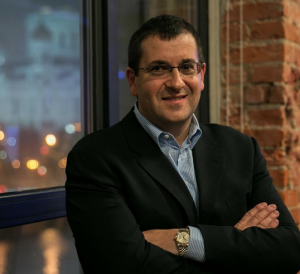By Lauren Mayer, on Wed Aug 6, 2014 at 8:30 AM ET
One of my favorite college classes examined children’s literature through the lens of cultural attitudes towards childhood. For example, the Brothers Grimm wrote all those dark, scary tales of witches & evil forests because in their day (early 19th century), childhood was just a smaller version of an awful adulthood. Poorer kids had to work on farms or in factories, even wealthier kids succumbed to disease, and stories had to prepare them for the general dangers of the world. In the Victorian era (later 19th century), children were viewed as pure and angelic, so their books were supposed to help enhance their innocence. And by the 20th century childhood really evolved into a separate phase of life, where books could enhance kids’ imagination or teach them valuable lessons. (And reading all these stories was a welcome change from typical academic fare – I loved sitting in the library, where my classmates were absorbed in Advanced Principles Of Molecular Biology or The Sociolinguistics of Anthropology, and they’d look over to see me enjoying “The Little Engine That Could.” But I digress . . . )
Sometimes, however, we would run into a classic piece of children’s literature that didn’t fit this historical trend – and in the case of some, like the Lewis Carroll ‘Alice’ books, as college students we naturally concluded his influence was pharmaceutical instead of cultural. Rabbits with pocket-watches? Disappearing grinning cats? Drinks & cakes that changed her perspective? (Okay, you can explain the Mad Hatter by the fact that the chemicals used in hatmaking were so toxic, they caused brain damage, hence the expression ‘mad as a hatter’, but Carroll’s Hatter was still pretty weird.) And for generations kids have enjoyed the strange, surreal world of Alice, thinking nothing in their lives would ever seem so crazy.
Until lately – the political scene has gone so out of whack, not even Lewis Carroll could have written it . . .
By Erica and Matt Chua, on Tue Aug 5, 2014 at 8:30 AM ET 
What makes a “Great Walk”? This question haunted me after reserving our spots on the Milford Track. Reputedly one of the world’s best hikes, reservations are required months in advice at the cost of almost $250 USD per person for the four day, three night, hike. What kind of public park hike requires you to carry all your stuff, cook your own food,and costs over $50 a day? After a year of traveling on less, paying that much to hike uphill seemed absurd. That said, having made the payment, we’d soon find out how great this Great Walk is.

After a beautiful boat ride to the trailhead the first day is lovably short hike through moss-covered forests.
Read the rest of…
Erica and Matt Chua: Hiking the Milford Track
By Saul Kaplan, on Mon Aug 4, 2014 at 8:30 AM ET  John Hagel speaks with satisfying precision. He has kind eyes and stern glasses, which together dominate the screen during a Sunday-afternoon Skype conversation. John Hagel speaks with satisfying precision. He has kind eyes and stern glasses, which together dominate the screen during a Sunday-afternoon Skype conversation.
As co-chairman of Deloitte’s Center for the Edge, Hagel hunts for unexploited capability on the “edges” of business and makes the case to include them on the CEO’s agenda. “The edges are most fertile areas for innovation,” he says. They are an important place to watch, because what happens at the edges transforms the core.
Hagel’s research encompasses geographic edges (overseas economies), demographic edges (younger generations entering the workforce, their unmet needs), and the edges of technological discovery. If there’s anything his work has taught him, it’s that the manual is less of an asset than the “ability to respond to unexpected events.”
Hagel believes that we are approaching fundamental revaluation of the role corporations play in our lives.
Corporations in the first half of the 20th century were built around what Hagel calls the “push” business model. The greatest asset of these vertically integrated, gargantuan structures was their knowledge stock — aggressively protected trade facts and formulas that allowed them to forecast with reasonable accuracy which direction to “push” operations.
However, this push model is failing in the face of expanding digital technology infrastructures, Hagel claims. Reinforced by long-term policy shifts toward economic liberalization, barriers to market entry have been significantly reduced on a global scale. The pace of our transactions has increased, the lifespan of knowledge stocks has decreased and competitive intensity in the US economy has doubled in the last 40 years. Hagel calls this “the dark side of technology” — a counter-narrative to the Silicon Valley script of dazzling possibility.
But Hagel sees an antidote to this volatility: openness. “People are realizing that they need to collaborate to survive,” he says, “You have to give up your secrets, your competitive advantage. It’s the only sustainable edge.” Hagel calls this new order the world of “pull,” and he describes it in his book, The Power of Pull: How Small Moves, Smartly Made, Can Set Big Things in Motion.
“Pull,” a splendidly iconoclastic antidote to traditional American corporate culture, means moving away from hub-and-spoke networks where knowledge was selfishly guarded to mesh networks that favor collaboration. Pull rejects claims to have all the right answers and instead favors asking smart questions.
“When people come at you with a façade as if everything’s under control, it does not generate trust,” Hagel says. “Admitting you don’t know something is a prerequisite to making progress.”
Rather than showing strength, influence in an uncertain economy paradoxically comes from expressing vulnerability. Yet Hagel says he had to learn the value of vulnerability. As a boy, he was often subject to his mother’s hostile temper.
“The key lesson that I took from my childhood was that my needs did not matter,” he explains. Upon his entry into management consulting, Hagel readily embraced the maxim that the client’s needs had to come first. “For the first part of my career, I was a servant of others,” he says. “The idea that others could help me was completely foreign to me.”
Hagel attributes the shift in his thinking to a talk he gave at the Collaborative Innovation Summit hosted annually by the nonprofit Business Innovation Factory (BIF) in Providence, RI.
“Saul Kaplan invited me to be a storyteller at BIF6, and I’ve talked a lot and in various conferences and settings, and that seemed perfectly fine,” Hagel says. “But then he said, ‘We want you to talk about a personal experience and what you’ve learned from it,’ — and that was very scary.”
“Stories are not my thing. I am a person of reason and analysis,” began Hagel’s BIF6 story. But sure enough, he shared two tales of formative childhood experiences in a passionate expression of his business philosophy that later became the story of that year’s Summit. “It was the first time I ever got on stage and talked about myself,” he reflected in hindsight.
The experience was an incredible catalyst. “It really unleashed a tremendous sense of potential and possibility, that by sharing my personal experiences, by talking about things I didn’t know, and I connected with people in a way that I would never have had I just given my standard speech. I can’t wait to be a storyteller at BIF10 in September.”
“The key lesson I got from the BIF Collaborative Innovation Summit,” Hagel says, “is that innovation is ultimately not about ideas, it is about personal connection.”
This is the first of a 10-article series originally published on the Time website, authored by myself and Nicha Ratana, of conversations with transformational leaders who will be storytellers at the BIF10 Collaborative Innovation Summit in Providence, RI, on Sept. 17-18.
By Julie Rath, on Fri Aug 1, 2014 at 8:30 AM ET 
Is your summer wardrobe in need of a refresh? At key points throughout the year, my Rath & Co. clients and I reassess their wardrobes for the upcoming season. We look at what works and what doesn’t, and what they didn’t have enough of last year. If you haven’t gone through this exercise for summer, before you go into full beach mode, carve out time to go through all of your summer clothes so that you can create a clear list of what’s missing. Below is my hit list of 10 summer must-haves to help guide you, plus a couple of grooming bonuses:
1) Lightweight t-shirts: a mix of henleys, crew and v-necks
2) Sweatshirt or long-sleeve shirt for post-beach
3) Summer footwear: sandals, flip-flops, or what I call social sneaks (aka nice sneakers you wouldn’t work out in)
4) Sunglasses
5) Swimsuits: here’s a guide on how to choose the best style for you.
6) Lightweight and light color dress shirts, pants, sportcoats, and suits (the latter two depend on your social calendar and how frequently you dress up for work).
7) Shorts
8) Strong deodorant with anti-perspirant
9) Minty soap: for more on soaps and other grooming products that will keep you cool, check out my post on Heat-Wave Style.
10) Sun protection: I’m fair-skinned and super-picky about what type I use — VMV Hypoallergenics Armada Face Cover is what works best for me. Also check out Bioastin Astaxanthin is what works best for me. Also check out Bioastin Astaxanthin , which is an antioxidant that’s said to help protect skin against the sun. , which is an antioxidant that’s said to help protect skin against the sun.
What’s on your hit list for summer?
By Matt Ranen, on Thu Jul 31, 2014 at 1:30 PM ET  If you are the CEO of a major American or European based multinational you have a difficult question on your plate right now. Are you going to the St. Petersburg Forum in late May this year? If it were Switzerland and this were the World Economic Forum annual meeting, the decision would pretty much make itself (unless you are just bored of Davos). But this is Vladimir Putin’s show, the Russians’ answer to what they see as the ‘Western-centrism’ of the World Economic Forum. If you are the CEO of a major American or European based multinational you have a difficult question on your plate right now. Are you going to the St. Petersburg Forum in late May this year? If it were Switzerland and this were the World Economic Forum annual meeting, the decision would pretty much make itself (unless you are just bored of Davos). But this is Vladimir Putin’s show, the Russians’ answer to what they see as the ‘Western-centrism’ of the World Economic Forum.
You’ve probably gone to St. Petersburg the last few years without much worry. Like Davos, it’s a good place to network, share perspectives, and talk informally with government officials. At St. Petersburg it’s often been about alternative perspectives, a map of the world that puts a big resource-centric ‘emerging’ economy right at its center rather than (as seen from Davos) at its periphery. That’s a useful intellectual and strategic exercise… and St. Petersburg is a great backdrop for it.
But this year is different. This week is the one year anniversary of the Edward Snowden story breaking. Then there was Crimea. And now, Eastern Ukraine. In the background looms Syria. If it were only one of these four things where Putin had stuck his fingers in Washington’s eye, people would be talking about St. Petersburg as a useful opportunity for another chance at a ‘reset’. But not this time, not with all four on the table.
In the last two weeks, top executives from companies like Alcoa, Goldman Sachs, Pepsi, and ConocoPhilips have taken phone calls from the White House asking them not to attend St. Petersburg this year. Nobody is telling them they cannot go — and it’s not illegal under current US sanctions. But is it worth saying no right now to people as close to the President as Valerie Jarrett or John Podesta or possibly John Kerry, for the sake of a few days in Russia? Is it worth a photo-op handshake between you and Mr. Putin that shows up on the front page of the New York Times?
Hard question. Russia is not a place that you just write off. It’s a large emerging market and an energy superpower. It’s a place where lots of money is being made and can be made so long as you are in the good graces of the Kremlin. Mr. Putin will surely take attendance at the meeting. Does anyone doubt the inevitability of subtle (or not so subtle) retaliation against the no-shows? Even more frustrating, how will it feel to cede the playing field to other companies who do go — including companies from some of our allies, like Germany, that are less severe in their judgements of Putin?
We’re not giving big bold advice here about whether anyone in particular should go or not go to St. Petersburg. The general point is simply to recognize that this type of decision, with these kinds of stakes and higher, is set to become a much more common dilemma for global corporations going forward than it has been for the last decade or more.
The global business environment has always been embedded within a global political environment, that used to go by the phrase ‘geopolitics’. Every decade or so, a pundit arises to proclaim that the interconnection between the two is over and that economy will henceforth dominate politics on the global stage. This pundit usually ignores history (an expensive error) and imagines that he or she is the first person to ever make this argument.
It usually doesn’t take long for the pundit to be proven painfully wrong. This time around it’s Putin’s turn to put reality up front. It’s not that the Kremlin ignores or doesn’t get the interests of global capitalism. Rather, the Kremlin competes in that game by doing everything it can to limit American freedom of action in the world and moving determinedly to increase Russian influence by wielding political and military power, not market power, because that’s what Russia has.
Russian geopolitical strategy in one phrase, is to put more sand in the gears — increase the friction — at any place and any time where life can be made more difficult for Barack Obama and US-based multinationals. This isn’t stupid, retrograde, anachronistic, or self-defeating. It’s basic strategy, blocking and tackling in a geopolitical sense.
Why? Because friction differentially benefits the less efficient, less global, and less powerful players in the game. It differentially hurts the players at the technological and economic horizons. And thus on a relative basis, it’s good for Russia.
There’s going to be more of it coming in the next few years. And not only from Russia, since the logic applies to many other emerging market governments and multinationals as well. As a result, CEOs of American based global companies are very quickly going to find themselves in a real bind.
No one wants to have to ‘choose sides’ in an argument like this, but the argument is not going to go away. This is going to require very thoughtful and subtle corporate diplomacy. The single most important question a CEO can ask right now is this: what do I need from governments, going forward, to limit the friction that my business will encounter at geopolitical flash-points? A little foresight and advanced planning may help.
By Josh Bowen, on Thu Jul 31, 2014 at 8:30 AM ET  We are almost half way through the year and I would like to do a short exercise with everyone. We are almost half way through the year and I would like to do a short exercise with everyone.
Ask yourself these three questions:
What have you accomplished in the last 6 months?
What are your current challenges and obstacles?
What are you going to complete in the next 90 days?
It is always a great idea to reflect on the last 3-6 months; what went right and what went wrong. Not only from a fitness perspective but also from a life perspective. This is an important exercise for us all, myself included. If you would like to share your list with me, I would be more than happy to listen.
As we approach the back half of the year, I look forward to what we are going to do together and separately. It will be a fun ride.
Onto the topic at hand, the grocery store. For many people the grocery store can be a confusing place, full of many aisles, misleading food labels and foods that may or may not appear good for us. I admit it, in my early days I was confused by the grocery store. Too much stimuli can be confusing.
To keep things simple I have included a link to a grocery store list/guideline for you to take with you.
Remember it is important to work off of a list, if it is not on the list, you do not buy it. It is that simple. The list gives you the following navigate the supermarket like a pro; • shop as efficiently as possible; • reduce temptations and distractions; and • ensure you get all kinds of healthy foods!
A few notes: The shopping lists are to give you ideas. You don’t have to buy everything on the list! I suggest you start with a few of your favorites from each group.
For example: • 3 veggies: spinach, carrots, broccoli • 3 fruits: blueberries, oranges, grapes • 3 proteins: extra-lean ground beef, salmon, lentils • 3 fats: coconut, avocado, almonds • 2 grains: oatmeal, wild rice
Not to spoil your excitement, I will let you click on the link and see for yourself!
By Lauren Mayer, on Wed Jul 30, 2014 at 8:30 AM ET The 1960s are retro cool these days, thanks to hit shows like Mad Men and Masters of Sex (not to mention all the Austin Powers movies). And while we admire the cool fashions (skinny ties! pillbox hats!), it’s all too convenient to dismiss the less-admirable aspects of the era (segregation, no effective birth control not to mention how women were treated in general, childhood diseases like polio & measles). But many of those phenomena are returning along with the fashions – setbacks in voting rights, civil rights, and reproductive rights, not to mention the anti-vaccine movement which is causing a return of diseases we thought were eradicated.
Well, now it’s time for another blast from the past – those of us are old enough to remember some of that era also remember the Cold War, when every spy movie used Russian villains and schools had ‘Duck & Cover’ drills (yes, we really did think hiding under our desks would protect us from the threat of Soviet nuclear weapons. Hey, I was only in 2nd grade, what did I know?, but I digress . . . )
After the collapse of the Soviet Union and the fall of the Berlin Wall, Russians were our sort-of-friends, not quite allies but no longer cool to use as movie adversaries. (And yes, we also learned that Duck & Cover was not the best strategy for avoiding nuclear fallout.) But lately, thanks to Vladimir Putin’s aggression, Russia is now a sort-of bad guy – not quite an arch-enemy but probably likely to turn up in a James Bond movie one of these days. And in the meantime, here’s a musical take on his unpredictability.
By Brooke Masters, on Tue Jul 29, 2014 at 1:30 PM ET  Banking union is the flavour of the month. Faced with investors who doubt the ability of some eurozone sovereigns to make good on their debts, the 17 members of the single currency have agreed to work together to channel aid directly to troubled lenders. But the deal is conditioned on the creation of a single banking supervisor, empowered to crack down on risky banks, no matter where they are located. Banking union is the flavour of the month. Faced with investors who doubt the ability of some eurozone sovereigns to make good on their debts, the 17 members of the single currency have agreed to work together to channel aid directly to troubled lenders. But the deal is conditioned on the creation of a single banking supervisor, empowered to crack down on risky banks, no matter where they are located.
Setting up an impartial expert to oversee the banks could well be a key step toward restoring trust. Freed from local political concerns, a central supervisor might well have a clearer view of the problems and the fortitude to take the almost certainly unpleasant decisions needed to solve them.
But well-informed banking supervisors can’t be summoned with the wave of a wand, and key eurozone finance ministers this week repeated calls for something to be put in place by the end of the year. Given that tight deadline, the options are pretty limited. The fledgling European Banking Authority, which opened its doors just over 18 months ago, currently sets standards but it has no legal authority to supervise banks. Its mandate to create a stable and level playing field throughout the single market also runs counter to taking on a specific eurozone role.
The European Central Bank is seen by many as the only operator with the credibility and resources to crack down hard on recalcitrant lenders. The current plan is for the ECB – or some offshoot – to take charge of the bigger, cross-border institutions while smaller banks would continue to be supervised locally. That arrangement – which parallels the UK plan to hand supervision back to the Bank of England next year – raises concerns about an overly powerful central bank trying to do too many jobs at once. It also contains a problematic fudge. Small banks can be dangerous too. Witness the woes of the Spanish regional savings banks and the 2007 depositor run on Northern Rock, a middle-sized UK lender.
Read the rest of…
Brooke Masters: On-site supervisors a good start for ECB
By Erica and Matt Chua, on Tue Jul 29, 2014 at 8:30 AM ET When you hear “Japanese fashion”, what do you think? Middle-age men wearing Disney World hats, Las Vegas t-shirts and enormous cameras? Or do you think the Harajuku women, dressed up like dolls, anime characters, and the occasional horse head? Are their fashion choices representing craziness or self-expression in a repressive society? Read our takes then have your say in the comments below.

.
HE SAID…
.
Fashion in Japan is interesting. “Interesting” used in a Minnesota-nice sort of way, as in, “it’s not my thing, I’m not sure about it, actually it makes me a little uncomfortable, but I can’t say that because…well I’m a Minnesotan.” I’ve been told that in other parts of the country people would say something like, “God bless their heart, I wouldn’t be caught dead in that!” I think many of the fashions are absolutely crazy, the pedophile soliciting schoolgirl outfits, the dancing Elvises, the anime characters!?! I don’t get it.
I don’t understand why people want to walk down the street and have people gawking at them. I don’t get why people want to become a tourist attraction. I really can’t comprehend why some of them get annoyed that tourists take photos of them, after all, they are the ones drawing the attention to themselves with their choices of clothing. More over, how long does it take these people to get all done up like this? Caking on the layers of makeup, doing up their hair, buying all the clothes, putting themselves together the way you would a Barbie Doll. The time, effort, cost and ogling makes the whole production seem unrewarding.

Are those shoes comfortable? Whatever you used to make your face look like that…is it toxic? What if it doesn’t go back to “normal”? Do you even care? What do you want to be? What feeling does it give you to do yourself up like this? Why, why, why? Maybe I have too many question, maybe I’m too cerebral for fashion, maybe it’s me that’s crazy, not them, but I’m pretty certain it’s them.
There is one thing I do like in Japanese and in broader Asian fashion: super short mini skirts. If wacky english worded slogans on shirts, strange makeup combinations, or odd styles are what we have to accept to get super short shorts on a daily basis then I could be converted…
Read the rest of…
Erica and Matt Chua: He Said/She Said: Japanese Fashion
By David Goldberg, on Mon Jul 28, 2014 at 1:30 PM ET “We could simply pack our bags and catch a plane to Barcelona ‘cause this city’s a drag.”
– Holiday in Spain by Counting Crows
 If you’re reading this, there’s a decent chance I’m catching you on a mobile device. And according to the latest Pew data, 6% of U.S. consumers are mobile ONLY. No home phone. No computer. And from what I saw at Mobile World Congress(MWC) last month in Barcelona, this number is guaranteed to rise. If you’re reading this, there’s a decent chance I’m catching you on a mobile device. And according to the latest Pew data, 6% of U.S. consumers are mobile ONLY. No home phone. No computer. And from what I saw at Mobile World Congress(MWC) last month in Barcelona, this number is guaranteed to rise.
One of the major conversations at the conference centered on device form factors – they’re getting bigger. Samsung, Nokia and Sony all announced new phones with larger screen sizes, and Huawei showed off its new “phablet,” a phone-tablet combo with a 7.1-inch screen.
The other major trend we kept hearing about is the rise of wearables. Samsung announced a new smartwatch family – the Gear2, Gear Neo, and Gear Fit – while perpetual rumors about a similar Apple device continue to swirl. Things like smartwatches have yet to prove themselves, but simpler wearable technology that tracks daily habits without incorporating other messaging and connectivity components (FitBit, Nike Fuel, etc.) have clearly filled a consumer need.
Another trend that continues to gain momentum is the increasing use of consumer friendly tools and services in a business setting. The trend of people bringing their own devices, or BYOD, has been around for quite some time. It’s now evolved into BYOS – or bring your own services. I participated in a panel discussing BYOD/BYOS, along with executives from Evernote, Merck, AT&T and others.
As part of the panel we unveiled the results of a SurveyMonkey Audience survey to find out how many of us are downloading and using services on our mobile devices at work, independent of those recommended or offered by our employers. Here’s what we found:
Employees are spending more and more time on their phones for work purposes
- Almost 30% (29%) of people report that half of their time – or more – is spent using their mobile phones for work
- More than half of respondents (56%) report an increase in using their mobile phone for business over the past three years
And most believe they will spend even more time on their phone for work in the future
- The majority of respondents (52%) believe that they will increase their use of mobile phones for business in the future
Now that employees are bringing their own devices, they are bringing their own services, software and applications into the workplace
- Slightly more employees (31%) report bringing ALL their own services into the workplace vs. those that only use services approved/suggested/provided by their employer (28%)
- 29% of respondents report using a mix of services/applications that they downloaded themselves and those provided by their employers
- 8% do this a lot
- 8% do this a good amount
- 13% do this some of the time
With productivity tools continuing to be more consumer friendly, like Box, Dropbox, Evernote, Google office apps, etc., and more mobile (we launched our own mobile app last month), this is another trend that will continue to generate lots of momentum. Innovations like these, and the others I saw during my trip to MWC, are going to accelerate the growth of that 6% mobile only number. Gracias, Barcelona!
|
|














